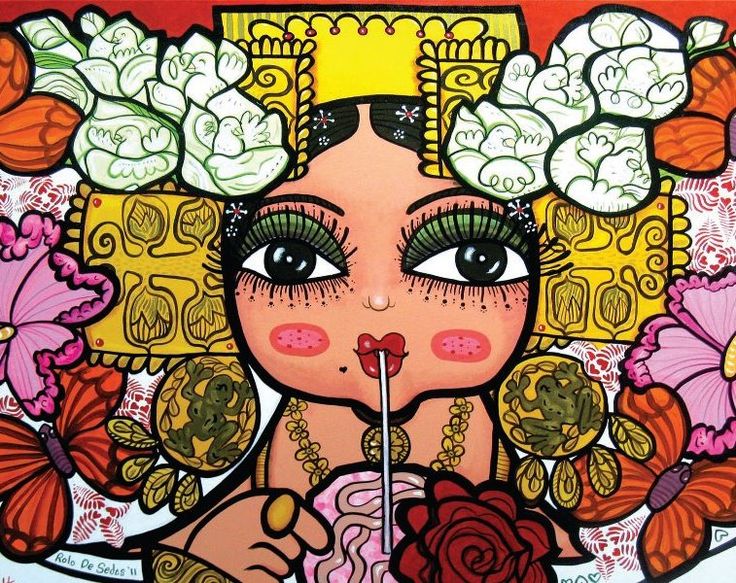Panamanian painter Rolando “Rolo” De Sedas has devoted himself to changing the gray cityscape of Panama’s capital by giving people access to colorful public art.
“Rolo” says that he always seeks to make his work accessible and to adapt it to urban spaces so that people who cannot go to a gallery may have the opportunity to contemplate his original – and colorful – efforts.
“My painting is not only done on canvas, but I take it from the context of the easel and bring it to the street, grottoes, murals, walkways, signs, and I even imprint it upon utilitarian (items) like towels,” he told EFE while perched on scaffolding working on his next mural in downtown Panama City.
The painter is well-known for his “eco neo pop” style, as he calls it, as reflected in his “Mamas,” or paintings of flirtatious women with wide eyes, tiny lips and wearing luxury skirts, typical dress for Panamanian women.
However, he doesn’t consider himself to be any kind of revolutionary in his artwork, although there are those who call him avant-garde.
“My art is no longer mine, but ours. People identify with my paintings, like a flag. It’s something that’s Panamanian,” he says.
Urban art has become popular in recent years in Panama City, with its mix of poor shantytowns and skyscrapers.
Examples of the style include the wall painted by the Panamnian El Kolectivo group representing the 1964 raising of the country’s flag in the Canal Zone, and the art of Boa Mistura, from Spain, on a facade in El Chorrillo, a low-income residential complex.
De Sedas, born in 1973, is following in those footsteps. He got his start in art at the Arte Ganexa University in Panama City, traveled to Barcelona in 2003 to get a Master’s degree in Art, Handicrafts and Ephemeral Architecture, and later a doctorate in Art for Public Spaces and Urban Regeneration.
He says that his latest work, which he is creating underneath a bridge in the city center and has titled “The Big Head of the Shaman,” is a largely yellow and black piece with high visual impact for its allusion to pre-Colombian art, comprised of minimalist and conceptual details, including flowers, eyes and geometric shapes.
“This is a work that is developing in a high-traffic area, and it allows people passing along the street to appreciate it from their vehicles,” he says of the piece, which already has taken him six days of work.
The project is part of the program to recover and create new public spaces promoted by the Panama Mayor’s Office and the Cemex Panama concrete manufacturing firm, and De Sedas was invited by city authorities to create the mural on the bridge
Over his 15-year career, the artist has created murals in Argentina, Peru, Cuba and Mexico, but he identifies strongly with Panama and says that his use of color and his nationalist content immediately clue in viewers to the fact that his work is Panamanian.
